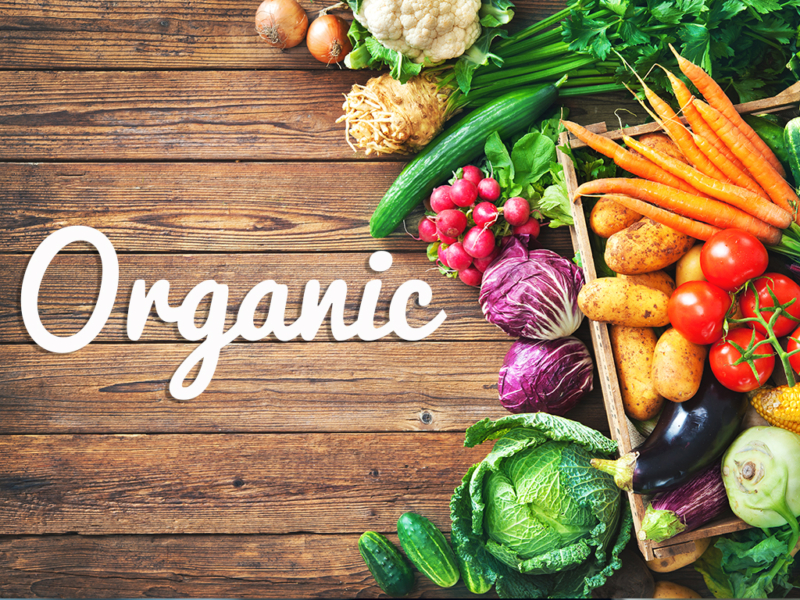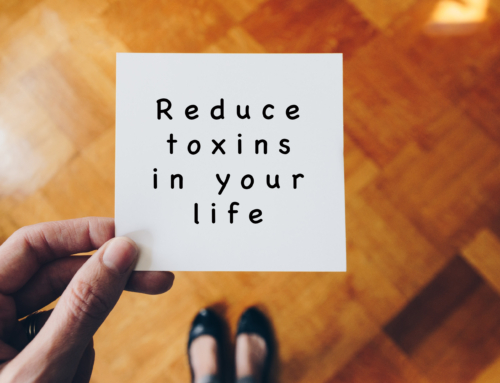How the food you consume is grown or raised matters to your health. Although organically produced foods may appear or sometimes even taste the same as conventionally produced ones, significant differences exist between them. Understanding those differences can help you make better choices to safeguard your health.
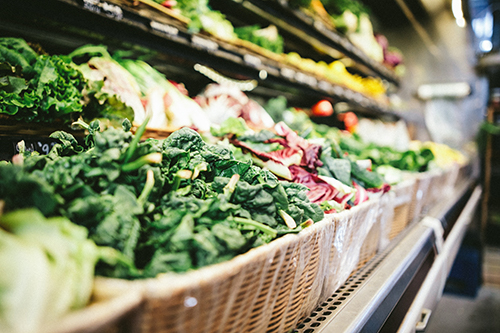 The term “organic” can apply to a variety of different kinds of foods, primarily produce, meat, poultry, eggs and dairy products. It also can refer to the methods used to process foods that are organically grown to keep them fresh and prepare them for market.
The term “organic” can apply to a variety of different kinds of foods, primarily produce, meat, poultry, eggs and dairy products. It also can refer to the methods used to process foods that are organically grown to keep them fresh and prepare them for market.
Organic crops are grown without the use of toxic synthetic or chemical fertilizers, pesticides and herbicides, sewage sludge, genetic modification or irradiation. Instead, organic farmers utilize natural fertilizers like manure or compost while weeds are naturally controlled by methods such as crop rotation, hand weeding, mulching, and tilling along with the use of safe naturally-derived pesticides. Pests are controlled using means such as birds, insects, traps and natural pesticides.
Protection from Pesticide Exposure
A primary reason to choose organic produce and products is to protect your body from pesticide exposure. The amount of pesticides, herbicides and other toxic chemicals used on conventionally raised crops is staggering. Based on the latest pesticide residue report released by the U.S. Department of Agriculture (USDA) in 2016, residues were detected in about 85 percent of the 10,000 plus samples tested. Fruits and vegetables were the most frequently contaminated with pesticide residues found in 82 percent of domestic fruits and 62 percent of domestic vegetables.
The most widely and heavily applied weed killer in the history of chemical agriculture is glyphosate, an herbicide that works by preventing plants from being able to make the proteins they need to survive.
 Every year, 300 million pounds of glyphosate (the active ingredient in product brand “Roundup”) is applied to at least 70 different farm crops commonly grown in this country, including ones like soy, corn and wheat extensively used in processed foods.
Every year, 300 million pounds of glyphosate (the active ingredient in product brand “Roundup”) is applied to at least 70 different farm crops commonly grown in this country, including ones like soy, corn and wheat extensively used in processed foods.
Glyphosate use has soared since 1996 when the first crop (soybeans) was genetically engineered to be resistant to this toxic herbicide that normally kills any plant. Because farmers are allowed to use it directly on mature grains within two weeks of harvest to dry them out more evenly to lessen the occurrence of mold, significant amounts of glyphosate residue can be found in finished food products made from these grains such as cereals, breads and baby food products.
Levels of glyphosate residue detected in the urine of individuals tested over many years rose by more than 1,200 percent between 1993 and 2016. A non-government funded public testing project carried out by a University of California San Francisco lab beginning in 2015 initially found glyphosate residue in the urine of 93 percent of individuals tested.
Can pesticide exposure really impact your health?
Testing by the Environmental Protection Agency (EPA) identified more than 55 pesticides that left carcinogenic residues in food. One widely used herbicide (glyphosate) was classified in 2015 by the International Agency for Research on Cancer (IARC) as a probable carcinogen in humans, specifically linked with non-Hodgkin’s lymphoma and lung cancer in studies.
Toxins from certain types of pesticides become stored in fatty tissues like the brain and can lead to the development of neurodevelopmental and neurodegenerative disorders such as ADHD, Alzheimer’s and Parkinson’s disease. Many pesticides act as “endocrine disruptors” that bind to, activate or block a hormone receptor and, thereby, alter normal hormone function. This can contribute to conditions such as estrogen dominance associated with hormone imbalance as well as increased insulin resistance and weight gain. At least 10 different types of pesticides are known to inhibit the production of thyroid hormone.
Pesticide exposure is particularly harmful to fetuses in the womb and children as their immune systems, bodies, and brains are still developing. Women who are pregnant or nursing should reduce exposure to pesticides as they can be passed from the mother to the child in the womb as well as through breast milk.
Keep in mind that many types of pesticides do not easily wash off since they are fat-soluble toxins. Waxy substances applied to certain produce items seals in pesticide residue, making it even more difficult. Some pesticides become systemic (incorporated throughout the plant), and are virtually impossible to remove. The problem with fat-soluble chemical toxins is that they tend to accumulate in our bodies, adding to our toxic body burden and degrading our health.
Can eating organic produce and food products significantly impact pesticide levels?
In studies based on urine sample testing conducted by the U.S. Department of Agriculture, individuals who began to eat organic foods for only a few weeks showed a decrease in the presence and number of different pesticides. Remarkable declines occurred in those who were children. In other research published in the journal Environmental Research, people who switched to a diet consisting of at least 80 percent organic food for just one week experienced an 89 percent reduction in detectable levels of a widely used class of pesticides (organophosphates) in their urine.
Protection from Genetically Modified Organisms (GMOs)
Foods that are certified organic cannot contain or be grown from genetically modified seeds. The process of genetic engineering alters the DNA of plants by artificially inserting genes from bacteria, viruses, insects, or animals into them, creating a new form not found in nature or with traditional cross-breeding. Its purpose is to produce crops that are more pest-resistant and better able to survive weather changes as well as ones that will yield greater harvests with shorter maturation time. Common GMO crops are corn, soybeans, cotton (used to produce cottonseed oil), alfalfa, summer squash, papaya, sugar beets, rapeseed (used to produce canola oil) and certain types of apples and potatoes.
 Over 90 percent of soy, corn and cotton crops in the United States are genetically modified and approximately 80 percent of all packaged processed foods in grocery stores contain genetically modified ingredients. While at least 60 nations require labeling of genetically modified foods, no such requirement exists in the United States to alert consumers on food labels or restaurant menus regarding the presence of GMO ingredients though many food manufacturers voluntary display “Non-GMO” on product labels.
Over 90 percent of soy, corn and cotton crops in the United States are genetically modified and approximately 80 percent of all packaged processed foods in grocery stores contain genetically modified ingredients. While at least 60 nations require labeling of genetically modified foods, no such requirement exists in the United States to alert consumers on food labels or restaurant menus regarding the presence of GMO ingredients though many food manufacturers voluntary display “Non-GMO” on product labels.
While companies that engineer GMOs insist they are safe, the fact is that no long term human clinical trials have been conducted to substantiate this claim. Research shows that GMO food particles shut down critical genetic codes in insects in order to kill them. Since similar genetic codes exist in humans, these particles can adversely alter genetic codes within the human body. Animal studies indicate GMOs may cause damage to internal organs and the pituitary gland as well the gut lining. A compromised gut lining can increase the risk of gluten intolerance and other types of food allergies or sensitivities that can lead to the eventual development of autoimmune diseases. Both of these conditions have risen significantly in recent years along with other related allergic conditions such as eczema and allergy-induced asthma. The endocrine disrupting effect of glyphosate, heavily used on genetically modified crops, can alter hormone balance and is thought to contribute to hormone imbalance conditions such as infertility, miscarriages, menstrual cycle irregularities, PCOS and hormone based cancers. As cited earlier, glyphosate is also classified as a probable human carcinogen by the IARC (International Agency for Research on Cancer).
Superior Nutrition and Taste
 Organic produce often exceeds conventionally grown produce with regard to nutrition and taste. A comprehensive scientific analysis of 343 studies published in the British Journal of Nutrition concluded that nutritional differences often exist between the two types. Organic fruits and vegetables were found to deliver between 19 and 69 percent more health-promoting flavanoid and carotenoid antioxidant nutrients than conventional ones. Organically grown plants also tend to have higher mineral content since they are grown in richer soil that is not depleted of minerals from years of treatment with chemical pesticides and fertilizers.
Organic produce often exceeds conventionally grown produce with regard to nutrition and taste. A comprehensive scientific analysis of 343 studies published in the British Journal of Nutrition concluded that nutritional differences often exist between the two types. Organic fruits and vegetables were found to deliver between 19 and 69 percent more health-promoting flavanoid and carotenoid antioxidant nutrients than conventional ones. Organically grown plants also tend to have higher mineral content since they are grown in richer soil that is not depleted of minerals from years of treatment with chemical pesticides and fertilizers.
The increased amounts of plant nutrients may in part be due to the fact that an organically grown plant must develop its own defenses in order to survive harsher environments since it does not receive chemical protection from insects and disease. Conventional crops may grow faster due to heavy fertilization but are unchallenged to develop their own self-protective plant chemicals. The fact that organic fruits and vegetables tend to grow more slowly and have lower water content means the flavor is often more intense.
Guidelines for Choosing Safer Produce
Due to extra cost or lack of availability, you may not find it feasible to obtain all organic produce. While some types of produce are heavily laden with pesticide residue, others are low enough to make buying conventional (non-organic) produce relatively safe.
Each year the Environmental Working Group analyses the results of government pesticide testing in the United States and publishes the results in their “EWG Shopper’s Guide to Pesticides in Produce”. Produce that contains the highest levels of pesticides are placed on the “Dirty Dozen” list and ones safer to buy that test low in pesticides are placed on a list known as the “Clean 15”. Just by avoiding buying non-organic produce on the “Dirty Dozen” list, you can reduce your exposure to pesticides by as much as 80 percent. The EWG 2019 Shopper Guide to Pesticide in Produce is as follows:
Dirty Dozen: strawberries, spinach, kale, nectarines, apples, grapes, peaches, cherries, pears, tomatoes, celery, potatoes and hot peppers
Clean Fifteen: avocado, sweet corn*, pineapples, sweet peas (frozen), onions, papaya*, eggplant, asparagus, kiwis, cabbages, cauliflower, cantaloupes, broccoli, mushrooms, and honeydew melons
Note: produce marked with an asterisk may be grown from genetically modified seeds. If you want to avoid GMO produce, the EWG recommends buying organic of these crops.

Codes on produce labels can be helpful in knowing whether the produce item is organic, GMO, or conventionally produced. A 5-digit code that begins with a “9” means the item is “organic”, a 5-digit code that begins with an “8” denotes “GMO” and a 4-digit code that starts with a “3” or “4” means the product was grown by conventional standards.
Whenever you cannot obtain organic, your next best option is to purchase locally grown food as it usually is harvested when ripe and thus is fresher with more flavor. Since it is not transported long distances, produce is not picked while still unripe and then gassed to “ripen” it after transport. Even when they do not have organic certification, local farmers often utilize at least some organic methods.
Keep in mind that all produce, including organic, should be washed just before eating, cutting or cooking to remove any dirt, bacteria or chemicals that may have contaminated it during the course of harvesting, packaging, transport or storage (washing before storing produce will cause it to spoil faster as fruits and vegetables have natural coatings that keep the moisture inside). For guidelines about washing produce, see my article “Healthy Cooking and Food Care Tips: Washing Fruits and Vegetables”.
As already mentioned, not all pesticide residues can be removed by washing. Discarding outer leaves of leafy vegetables and peeling conventional fruits and vegetables can reduce some degree of contamination although peeling also may result in loss of nutrients.
Understanding Labeling for Organic Foods

In order for a product to be labeled organic with a USDA seal, the farm where the food was grown must be inspected and pass strict standards set by the U.S. Department of Agriculture that include no use of pesticides, chemical fertilizers, dyes and other synthetic additives or processing using industrial solvents, irradiation, or genetic engineering. Harvested crops can only be sold as organic if no prohibited substances are applied to the land for a period of three years preceding the harvest of the crop.
Any company that handles or processes organic food before it is sold in a store or restaurant must be certified as well. Food manufacturers that sell less than $5,000 a year in organic foods can label their products organic if they follow the guidelines for organic food production but they cannot display the USDA seal since they are uncertified.
Labeling terms for organic foods vary according to what percentage of the food is made with 100 percent certified organic ingredients. There are four types of organic claims:
Guidelines for Organic Animal Products
It pays for your health to obtain meats that are organically raised whenever possible as well. Livestock raised in conventional factory farms are often injected with growth hormones designed to more quickly increase their size for slaughter and ramp up milk production. Elevated levels of insulin-like growth factor from these growth hormones are associated with an increased risk of breast, prostate, and other cancers. Antibiotics are often given since these animals are highly susceptible to infection due to crowded and unsanitary conditions.

While conventionally raised cattle may spend the first few months of their life on pasture land where they can eat grass and other vegetation, they are then sent to feedlots where they are fed huge quantities of GMO corn and soy-based protein supplements. Considering it takes 5-8 pounds of feed to produce one pound of beef, consuming such beef means taking in considerable amounts of toxic residue from these pesticide–laden crops in a concentrated form. Milk, cheese and other dairy products from cows that eat such feed is contaminated by chemical pesticide residue since the toxins settle in their fatty tissues.
Cattle and other livestock raised according to organic standards enjoy healthier living conditions. They are allowed to freely graze on the grass and vegetation God designed them to eat plus any feed they get is free of GMO’s, pesticides, antibiotics or growth hormones. Nutritional levels are higher as well, especially with regard to the amount and composition of fatty acids. Meat and dairy products from grass-fed cows contain twice as much conjugated linoleic acid (CLA) and five times as much omega-3 fatty acids than meat from grain-fed cows. Grass-fed beef also contains less total fat than grain-fed beef.
Labeling Criteria for Organic Animal Products
Organic beef – in order for meats to be labeled organic, regulations require that animals have access to pasture during a minimum 120-day grazing season, that they are only fed 100 percent organic feed and that they are not given antibiotics or growth hormones. Keep in mind that the organic label for beef does not necessarily mean that cattle are grass-fed or grass-finished. Likewise, the term “grass-fed” used on the label does not necessarily mean “organic”.
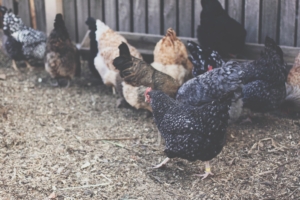
Organic poultry – only the terms “free-range” and “organic” are regulated by the USDA. Other terms such as “pasture-raised”, “cage-free”, or “all natural” must follow established guidelines but do not involved USDA certification. “Free-range” chickens (or other poultry) must have access to the outdoors at least 51 percent of the time but no restrictions exist regarding what they can be fed. In order to be certified organic, chickens must be fed 100 percent organic feed that is GMO free and contains no pesticides, chemical fertilizers, hormones, antibiotics or animal by-products. They must have outdoor access although no duration or location requirements are specified.
Organic eggs – for eggs to be certified USDA Organic, they must come from chickens that are fed organic, non-GMO feed, do not receive antibiotics and are kept uncaged in barns or warehouses withoutdoor access. However, no minimum time to be outdoors is mandated nor are they required to have access to grass like “pasture-raised” chickens.
Organic dairy products – in order for dairy products to received USDA organic certification, dairy animals must be under continuous organic management from the last third of gestation or at least one year prior to the production of milk or milk products. The grazing season must last at least 120 days out of a year and take place in certified organic pastures. At least 30 percent of the cow’s nutrition should be obtained from grazing. Cows cannot be given hormones that stimulate milk production and any feed they are given must be grown without synthetic pesticides, antibiotics, GMO-derived products, animal by-products and synthetic preservatives.
Why Choose Organic Coffee
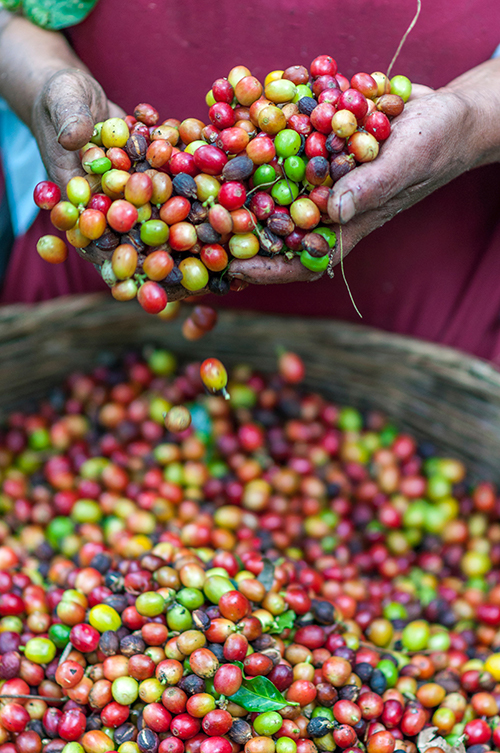 The average coffee lover sips their brew with no real awareness of where their coffee comes from or how it is produced. The unfortunate fact is that conventionally farmed coffee beans are one of the most heavily chemically treated crops in the world. Even more concerning is the fact that most coffee is imported from countries where there is little to no regulation with regard to the amount of pesticide residue allowed. Moreover, toxic pesticides banned in the United States are still used with no restrictions in various third-world countries that export coffee.
The average coffee lover sips their brew with no real awareness of where their coffee comes from or how it is produced. The unfortunate fact is that conventionally farmed coffee beans are one of the most heavily chemically treated crops in the world. Even more concerning is the fact that most coffee is imported from countries where there is little to no regulation with regard to the amount of pesticide residue allowed. Moreover, toxic pesticides banned in the United States are still used with no restrictions in various third-world countries that export coffee.
Coffee’s increasing global popularity has made it one of the most widely traded commodities in the world. In order to meet this demand, changes implemented to modernize coffee farming to boost yields per acreage have necessitated use of substantially higher amounts of pesticides. As much as 250 pounds of chemicals can be applied to just one acre of a conventional coffee bean field. According to the Food and Agriculture Organization of the United Nations, rates of pesticide application to coffee bean crops have increased as much as 10-fold in certain parts of the world since the early 1990’s.
By choosing certified organic coffee, you are assured that the growing conditions and processing involved in producing the beans are monitored by independent agencies and are free of chemical pesticides, herbicides, fungicides and insecticides. Organic coffee beans are grown using only natural fertilizers like compost and manure. Most organic coffee is shade grown in ways that better support the environment and enrich the soil versus depleting it with harsh chemical applications. As an added bonus, many consider organic coffee to be richer in antioxidants and more flavorful as well.
Concluding Thoughts
The quality of your food and drink matters to your health. There is no doubt that purchasing organic products can be more expensive due to factors such as the cost of organic certification, the use of organic feed that cost twice as much as conventional feed, and the fact that organic farming is more labor intensive, has smaller farm operations with less profit and does not receive government subsidies. The good news is that prices are falling with the increase of organic options since mainstream stores now carry greater varieties of organic foods and have even developed their own store brand organic lines.
While spending more to increase the quality and nutritive value of your food and avoid the long-term impact of harmful chemicals and genetically altered foods may mean making sacrifices to spend fewer dollars in other areas, it is worth it to protect your health. As a plaque in my office states, “better to invest in your health now rather than pay for it later”.
Article Written by: Lucinda Bedogne, CNHP, CNC

